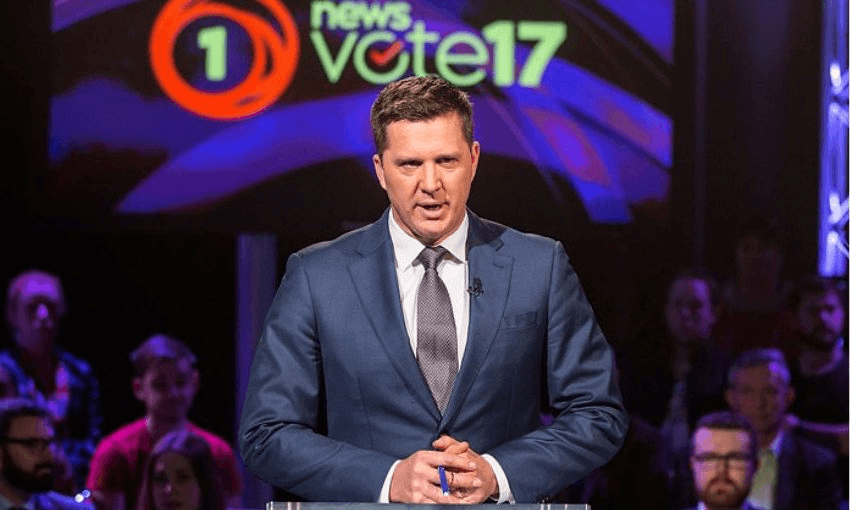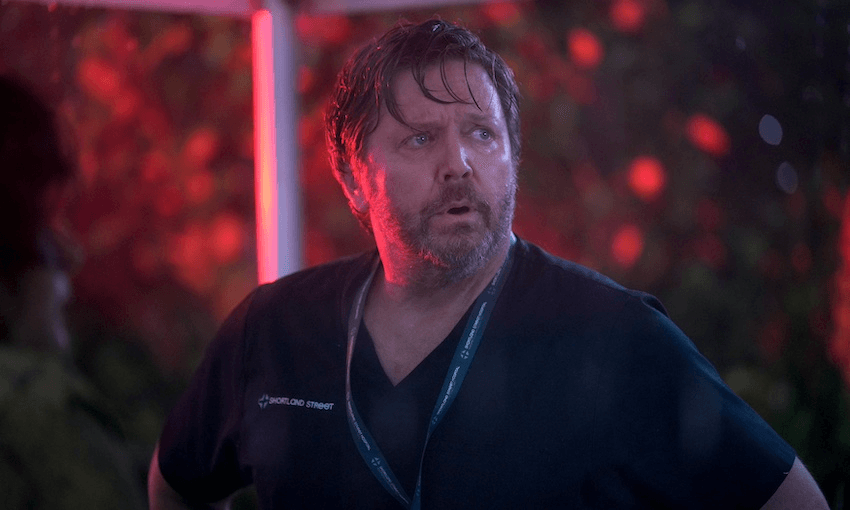The state-owned broadcaster has long resisted public service. Yet with $38m on the table, and the government’s relationship with RNZ rocky, moving Q+A to primetime could be be seen as a deftly timed olive branch
The press release, under the headline “TVNZ powers up primetime political coverage”, came out at 3:25pm yesterday afternoon – until recently about as prominent a time slot as politics could hope to achieve in New Zealand outside of close proximity to an election.
Yet the release, which talked about TVNZ “showing its commitment to political coverage”, was about much more than rescheduling a TV show. The shift of its flagship politics show Q+A from Sunday morning to evening is a bold strategic move. It’s also a clear signal to this government that TVNZ is no longer the headstrong child stubbornly resisting direction, but is in fact more than willing to listen when there are incentives to do so. Especially, perhaps, 38,000,000 incentives.
The background is this: when last in government Labour was persistently infuriated by TVNZ’s refusal to act like a state broadcaster and deliver what it considered important works of current affairs and culture to the people. To help push it toward this Helen Clark’s government introduced the “charter” in 2003, which enshrined some non-commercial outcomes and provided a $15m annual funding boost to help achieve them.
TVNZ, for its part, focused near-entirely on its bottom line – returning an after tax profit of $19.4m in 2008. Infamously, it used charter funding to successfully bid on the 2008 Olympics in Beijing.
When National came to power late in 2008, it announced the charter a failure (which wasn’t entirely unfair, it having been rejected by its host), and rolled the annual $15m into an NZ on Air platinum fund – used to create premium products which the agency wouldn’t ordinarily be able to back, like… Q+A.
The political current affairs show, along with its similarly oriented counterpart Newshub Nation on Three, has always been at the heart of the infuriating enigma of the NZ on Air model. Which is to say that it produces some excellent products, made for the right reasons and with genuine civic values at their heart – and then the public and funding agency watches aghast as they’re played mid-morning Saturday and Sunday, timeslots destined to ensure minimal audience and engagement outside of the tiny political tragic demographic.
This has long-enraged a relatively small yet vocal contingent who view state-owned mass communication rather like Lord Reith, the legendary founder of the BBC, who thought it should inform, educate and entertain – in that order – and was famously disdainful of anything popular for its own sake. In New Zealand there is a long cultural memory of state controlled broadcasting – which lasted until the radical reforming 80s – and a perpetual grumbling at various pitches of prominent people wanting a return to that era.
It reached its apex in 2006, when an open letter was published in the Herald saying that, due to the commercial model, “New Zealanders get the worst deal of any in the western world”, and asking “remember Closer to Home? McPhail & Gadsby? Gallery?”.
It was signed by 31 prominent New Zealanders, including five knights, four dames, a cardinal and a QC, and sought “radical change”. It did not get it.
Latterly a similar sentiment has assembled under the umbrella of the Coalition for Better Broadcasting (now known as the Better Public Media trust), part of whose initial manifesto talked about disavowing anything which “treats audiences like idiots”. Not hard to imagine what they think of Dancing with the Stars.
Neither Helen Clark nor John Key were profoundly moved by the letter nor the coalition, yet the desire never went away. For the past few years they have had a key sympathiser in Clare Curran, formerly opposition spokesperson for broadcasting, but since October the minister for broadcasting, communications and digital media. And, in Paul Thompson’s galvanised RNZ, a radio product which not only largely fits their ideal, but is growing in listeners and online viewers as a result.
So, when part of the then-opposition Labour party’s policy platform included a $38m boost to public broadcasting, the coalition and its sympathisers applauded. The spectre of RNZ+, including more digital and even a television channel, was particularly well-received. “RNZ+ will become the multi-platform public service operator we need for the digital future,” the CBB chair Peter Thompson said at the time. “Labour’s policy will redress the current government’s short-sighted decision to shutdown [late ad-free channel] TVNZ 7.”
He went on to note that “crucially, this is not a return to the confusing dual commercial/public remit of the TVNZ Charter.” Indeed, TVNZ was notably shunned by the new policy, mentioned only as a services provider for the new RNZ+ – one in which Labour had so little trust that pointedly talked about those services being provided “at audited and transparent cost with an agreed margin”.
That was nine months ago. In the intervening time things have gotten pretty spicy. There was that meeting at Astoria café, which eventually led to senior RNZ exec Carol Hirshfeld’s resignation. That led to an extraordinary select committee appearance by outgoing RNZ chair Richard Griffin. RNZ has even appeared somewhat non-committal about the prospect of starting a linear TV channel in an era when the format is in reasonably rapid decline. And all the while there has been a private battle being waged between NZ on Air and RNZ about who will control how much of that $38m. (Whether the full $38m materialises in tomorrow’s budget remains to be seen: recent whisperings suggest it may be closer to $25m.)
TVNZ must have watched this chaos with some satisfaction. Now, having endured some internal political reporting ructions of its own, it has beefed up its press gallery team with excellent reporters from within (Seven Sharp’s Maiki Sherman) and without (RNZ’s Benedict Collins), and put the superb Corin Dann on the Q+A hosting job full-time – with a Beehive office for good measure.
Moving the show a full 12 hours later in the day suddenly makes Sunday nights look quite different: the news, Country Calendar, current affairs, Coast New Zealand or British drama – then Q+A, which might as well be a reboot of… Gallery, the political current affairs show which ran from 1968-1973 and was notably mourned in that open letter. It’s a throwback Sunday on the biggest media platform we have.
All of which looks a lot like a peace offering from TVNZ. The timing is brilliant: its chief state-owned rival for funding is licking its wounds, and its chief TV rival is agitating for TVNZ1 to become non-commercial, while almost no one has any expectations of it anymore. And here, out of a clear blue sky, it brings serious political current affairs back to the TVNZ primetime for the first time in years.
It’s a clear indication that the channel can, when the right circumstances present, do things which are on the face of it public-spirited and non-commercial. That it does so at a time when there’s a budget looming and there just happens to be a large pot of money looking for a home is, surely, just a coincidence.



